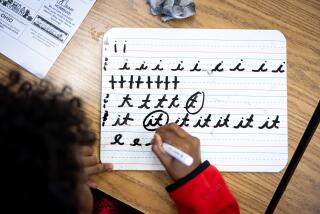Before the computer, there was something almost as complex: the Chinese typewriter

When it came to Chinese and Japanese typewriters, the design challenge was creating a typing device without keys. These engineering marvels pulled it off.
For more than a century, Chinese typewriters have been objects of curiosity, confusion and even a fair bit of ridicule — after all, how do you type a language that has no alphabet?
On “The Simpsons,” smarty-pants Lisa was confounded by an imaginary one that featured countless buttons covered in complicated-looking characters. One of hip-hop artist MC Hammer’s frenetic, high-stepping dance routines was nicknamed the “Chinese Typewriter” because its furious moves supposedly mimicked the flailing that would be required of a Chinese typist trying to quickly hop about a massive keyboard.
But now, an associate professor at Stanford University is trying to give these esoteric contraptions a bit more of their due, arguing that the misunderstood machines — long dismissed as less practical and less efficient than alphabetic typewriters — actually pioneered familiar smartphone-era technologies, including predictive text and autocomplete.
“The Western typewriter has become a cult object; there are hundreds upon hundreds of collectors and museums. People collect and fetishize them,” professor Tom Mullaney said. “But Chinese typewriters are exquisite machines. They are very different. They are typewriters without a keyboard, and that often confounds peoples’ imaginations.”
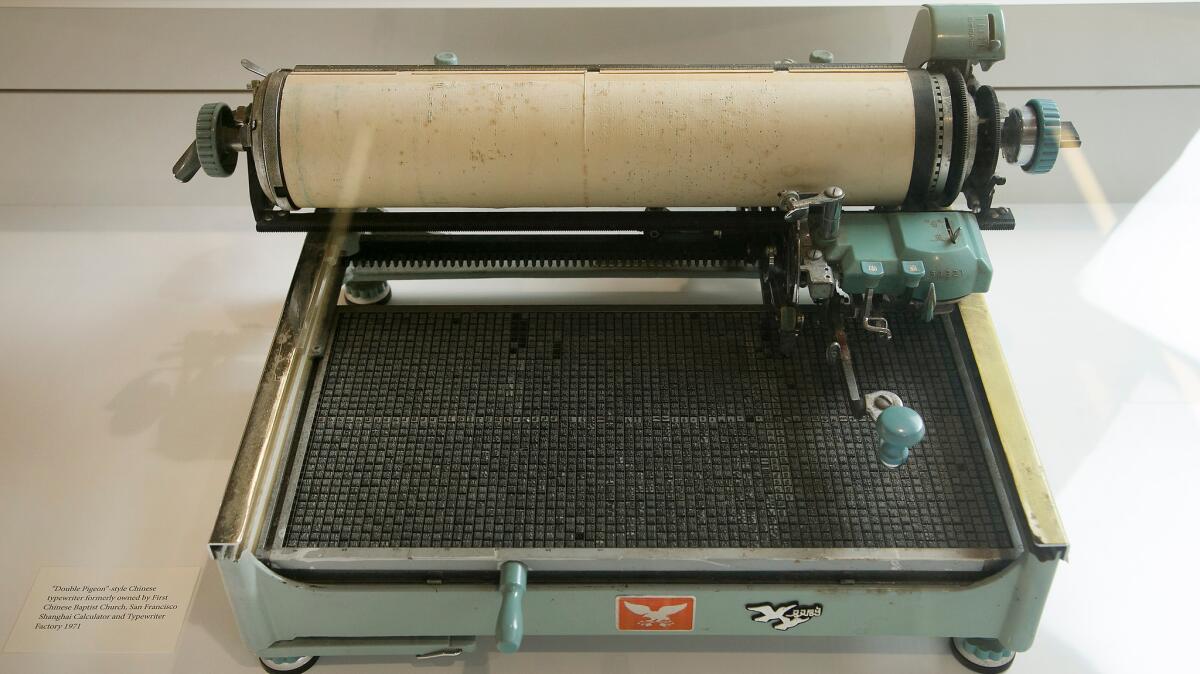
Chinese typewriters look something like a cross between a deli-meat slicer and a small printing press. There are no keys, just thousands of little metal characters arranged in a grid system. Because Chinese has no alphabet and no alphabetical order, the operator must essentially memorize the location of each character — about 2,500 on a typical machine.
They’re heavy — roughly 30 to 40 pounds.
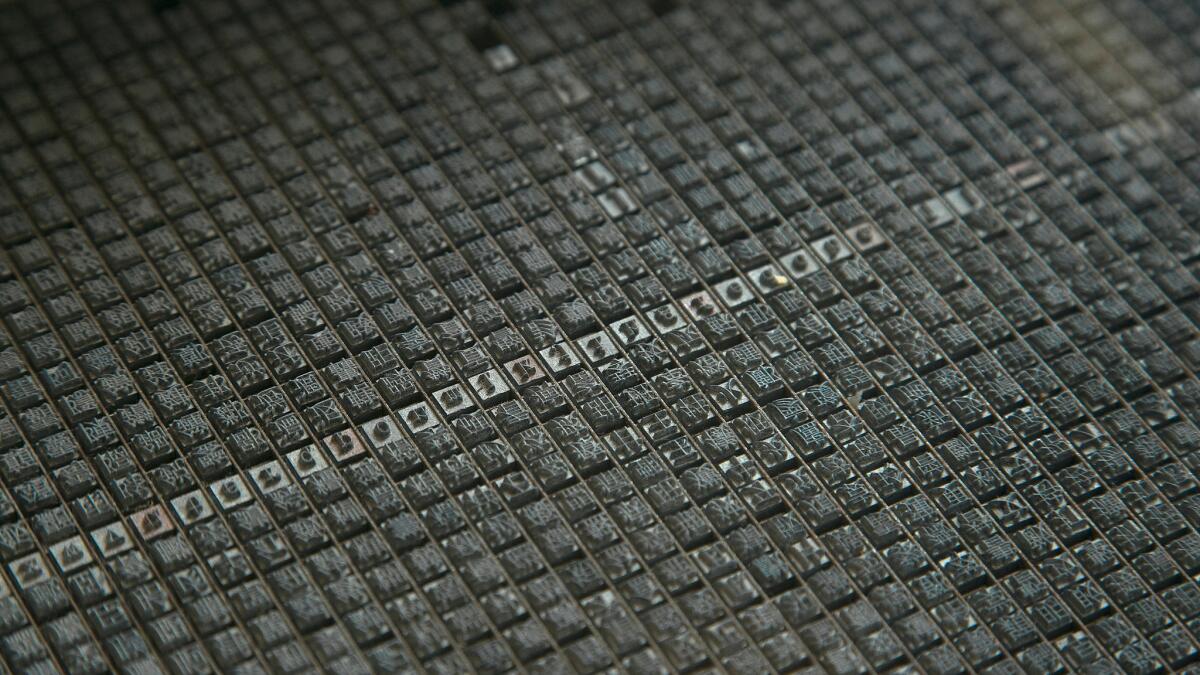
Sort of by accident, Mullaney has become an expert on, collector of and evangelist for Chinese (and Japanese) typewriters after obtaining his first specimen from a man who was getting rid of one once used by a Chinese American church in San Francisco.
Since he caught the typewriter bug in 2008, Mullaney has collected 12 machines — which might not sound that impressive, but that’s four times as many as China’s only typewriter museum, in Shanghai. He’s lectured about them at Google and around Silicon Valley.
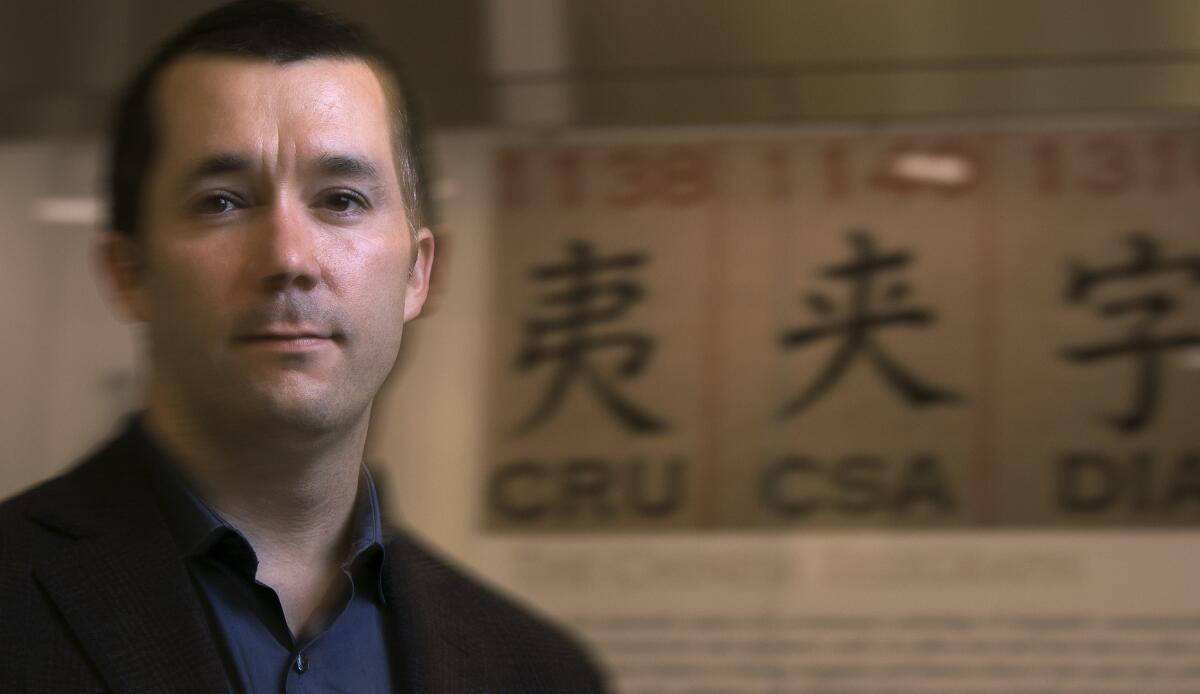
Mullaney has delved so deep down the rabbit hole he has not one but two related books in the works: “The Chinese Typewriter: A Global History of the Information Age, Part I,” will be published next year, followed by “The Chinese Computer: A Global History of the Information Age, Part II.”
Three of his machines are on display at Stanford’s East Asia Library until Sept. 10, and he recently raised almost $13,500 on Kickstarter to help take the collection on tour across the world. Eventually, he hopes to be able to transfer the devices to an institution for research and safekeeping.

The tinkerers and inventors who struggled for decades to develop a Chinese typewriter were taking on a fascinating engineering puzzle, Mullaney said. The various solutions they came up with — even those that never won commercial popularity — may hold valuable lessons for today’s IT engineers.
“With the Chinese typewriter, there was a constant process of optimization, and some of the most brilliant and penetrating analysis of human-machine interaction, data structuring,” he said. “This is a machine whose history is a repository of design inspiration.”
::
Zhang Haiyan still remembers the frenzy that ensued at her state-owned company in the 1980s when one of its subsidiary factories asked to borrow a typewriter from the Beijing headquarters to draft some business letters in Chinese.
“The factory director had to collect lots of approval stamps from different departments and even the [government] ministry,” the 59-year-old retired clerk said. The rare and expensive contraption, she recalls, was normally kept in a locked office, and only two big bosses had the key. She had never really laid eyes on one. “Everything in that room was mysterious to us … so I was always very curious and tried to take a peep when the door was unlocked.”
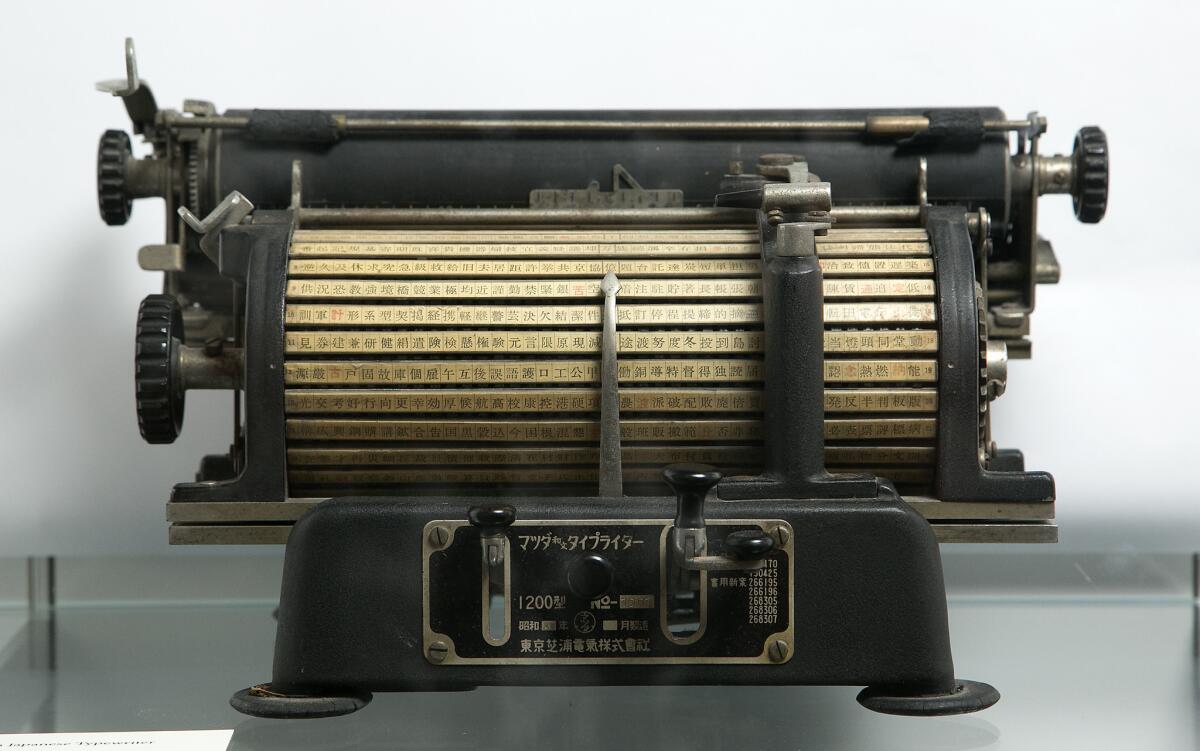
When the loan was finally approved and workers came to collect the machine, Zhang figured she’d finally get to see it. “Unfortunately, it was put in a big box, and covered with a piece of cloth, so even today I still didn’t know what exactly it looked like,” she said. “It was gently put in a car… just like a VIP guest.”
“It wasn’t for people like us, clearly.”
As Zhang’s story illustrates, few Chinese ever saw a Chinese typewriter, let alone learned to type on one. But today, hundreds of millions of Chinese speakers type — on desktops, laptops, tablets and smartphones.
The most common way is by “spelling” the word using a typical Qwerty keyboard. So if you want to type “hello,” or ni hao, you enter n-i-h-a-o. A menu then appears with a list of characters that are pronounced ni and hao, and you must select the right ones.
Another way is to draw the character you want on the device’s touchscreen; again, a menu will pop up with a selection of characters that most closely resemble what you sketched. Once you recognize the one you want, click it, and move on to drawing the next character.
Both these systems, though, require a two-step process of inputting and selecting that’s impossible without software. So how did Chinese typewriters work?
NEWSLETTER: Get the day’s top headlines from Times Editor Davan Maharaj »
Starting in the late 1800s, various systems were pioneered — and a lot of the work was done by students and academics from American institutions, including MIT and New York University. Companies such as IBM and agencies including the CIA also worked on developing Chinese typewriters.
The models that were commercialized most widely, under brands with names such as Double Pigeon and Seagull, had a tray of about 2,500 commonly used Chinese characters arranged in a grid; typists would move a selector-lever over the tray to hunt for the character they needed, then press a bar, which would trigger a lever to pick up the character, ink it, type it and return it to its place.
Yet in a language with no alphabet, and thus no alphabetic order, how to arrange the characters in the tray became a question. Traditional organizational methods, such as by number of strokes in the character, or general frequency of use, were inefficient — even the fastest typists could manage just 20 or 30 words a minute.
Typists started reorganizing their trays to suit their needs. One who worked in an office dealing with agriculture might put characters used to make words such as “farm,” “crops” and “harvest” near the top of the tray because those words were used frequently; a typist in a police station would have a totally different arrangement, with characters used in words such as “officer,” and “crime” close at hand.
Given that communist leaders’ names were typed often, the character for “Mao” was put near those for his given name, “Ze” and “Dong.” The characters for “chairman” were situated near “Mao” as well. In this sense, these trays anticipated what characters the typist was most likely to need along with “Mao.”
Cutting the distance between characters that were often used together allowed typists to increase their speed to as many as 80 words per minute. Today’s smartphones do much the same thing — suggesting “Washington” as the next word to follow if you type “George,” for example.
::
Like Mullaney, Jackson Lu is a typewriter geek. He started collecting in Europe and opened the Lu Hanbin Typewriter Museum in Shanghai in 2010. Though he personally has over 500 typewriters from across the world, he has just three from China.
“Fewer were produced and there’s not the same amount of variety,” Lu said. “Many of them were destroyed in the Cultural Revolution.”
In China, typewriters were never common objects. While American authors such as Mark Twain, Jack Kerouac and even Hunter S. Thompson had their Remingtons, Underwoods and IBM Selectrics, their Chinese counterparts were still writing by hand. One issue was price — a Chinese typewriter would cost 20 times what an average worker would make in a month. And once the Communist era began, even if an individual wanted to buy a typewriter, it wasn’t allowed.
“Only institutions could have them, and they had to be registered with police,” Lu said. In addition, he said, typists (along with locksmiths and rubber-stamp makers) had to have a license and be “politically reliable.”
“The government controlled typewriters like they controlled guns,” Lu said.
Such rules aimed to keep the state firmly in control of information. But in 1959, Mao’s wife, Jiang Qing, received an anonymous, typed letter from someone scolding her over humiliating details of her romantic history. The missive was so distressing to Jiang, it reportedly caused her to faint.
More than 20 investigators from the Ministry of Public Security were tasked with tracking down the author.
Experts concluded that the letters were typed on a Baoshi-brand typewriter that was at least 10 years old, and the typist was not a professional. Other details such as the paper and glue quickly led them to the East China Sea Fleet, which had such a typewriter registered to it.
A disgruntled navy lieutenant, Jin Bolin, was fingered as the perpetrator, and sent to prison for several years for leaking state secrets.
These days, no restrictions are placed on who can have a typewriter in China; Chinese authorities have moved along with the times and now put their efforts into censoring the Internet.
Although the Chinese typewriter may be functionally obsolete, Mullaney argues the technology needs to be saved and analyzed, and may even hold some seeds of inspiration for communication devices of the future.
“Studying history is not just looking at old stuff,” he said. “It’s about innovation, disruption. For people out there who are trying to think far, far ahead … or getting out of certain mindsets, one of the best places they can go looking for inspiration is back in time — before a certain kind of standard or convention took shape.”
Yingzhi Yang and Nicole Liu in The Times’ Beijing bureau contributed to this report.
Twitter: @JulieMakLAT
ALSO
Philippines leader declares ‘state of lawlessness’ after deadly market bombing
Obama makes progress on climate change, the bright spot in his China policy
13 killed, dozens wounded as suicide bombers target a Christian colony and a courthouse in Pakistan
More to Read
Start your day right
Sign up for Essential California for news, features and recommendations from the L.A. Times and beyond in your inbox six days a week.
You may occasionally receive promotional content from the Los Angeles Times.


